Shining Sconces: Add Light, Mood and Drama with This Design Darling

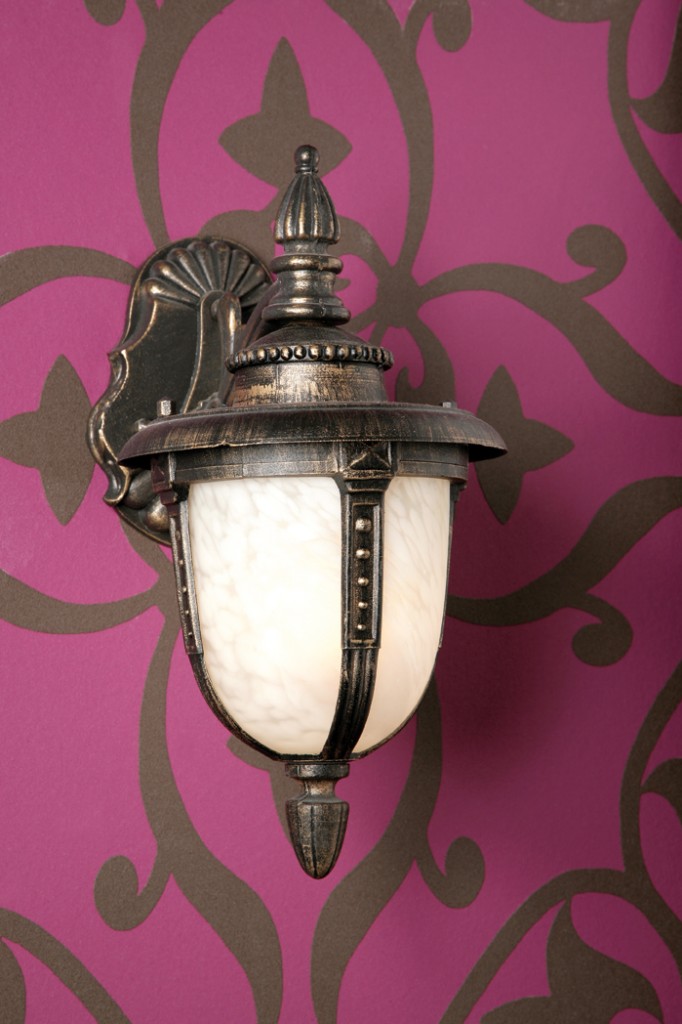 The art of lighting is a delicate one. Install the wrong fixture (too big, too small, too bright) and the entire mood and tone of a space can be derailed. But get the lighting just right, and you will be rewarded with a room you’ll be proud to let shine.
The art of lighting is a delicate one. Install the wrong fixture (too big, too small, too bright) and the entire mood and tone of a space can be derailed. But get the lighting just right, and you will be rewarded with a room you’ll be proud to let shine.
Designers agree that the key to successful lighting in a room is using a combination of ambient, task and accent lighting. Layering is really at the heart of this concept; embracing it provides dimension and warmth. Incorporating all three types of lighting will help create a functional, beautiful space.
When considering wall sconces in terms of this three-part lighting formula, they are perhaps one of the most versatile light fixtures you can buy since they can be used for all three: Ambient in the way they truly encompass a space, task in that they go where you want them to go and shine where you want them to shine, and finally, accent lighting at its finest, since sconces offer such customized style. Sconces can suit just about any taste, and are available in all sorts of shapes, colors, finishes and sizes. They present the light bulb moment you’ve been waiting for!
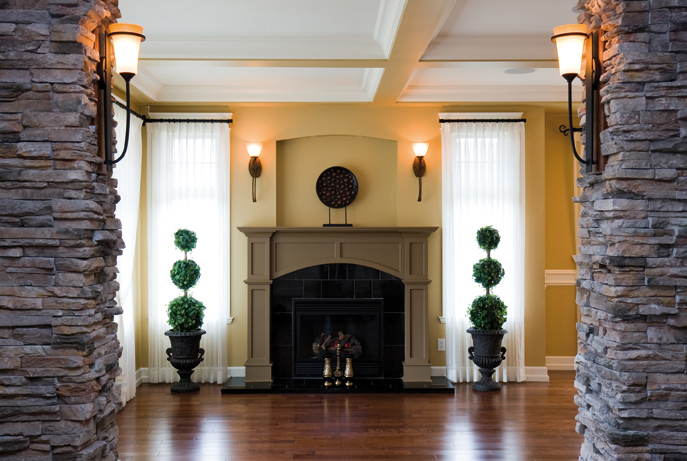 Unobtrusive and out of the way, these lights are the perfect solution for rooms lacking in available surfaces. Need a soft glow next to the reading chair in the den but don’t have room for a floor lamp or table-top fixture? Installing a wall-mounted sconce beside the chair could be the just the thing.
Unobtrusive and out of the way, these lights are the perfect solution for rooms lacking in available surfaces. Need a soft glow next to the reading chair in the den but don’t have room for a floor lamp or table-top fixture? Installing a wall-mounted sconce beside the chair could be the just the thing.
Yet beyond its power to space-save, a collection of sconces can add drama and personality to a room lacking that finishing touch. Think of light fixtures as an accessory rather than merely a fixture, the difference being that accessories adorn the room rather than simply illuminate it.
Functioning as both task and accent lighting, sconces can bring a little sparkle to areas you’d like to focus attention on. Use them to frame an oversized print or mirror in the dining room, or flank a fireplace with a matching set. When off, decorative sconces add artistic appeal, but turn them on and watch the wash of light create a tangible feeling and mood.
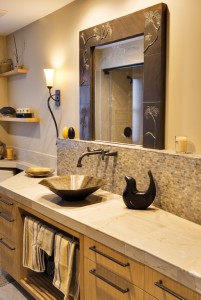 Style File
Style File
Once used to hold candles before the age of electricity, wall sconces have now blossomed into a massive genre of wired lighting that has a design for everyone. Traditional styles, with intricate iron detailing and cream shades, and modern options, complete with stark lines made from industrial metals, are both available—and that’s only a sample of existing looks. Lighting designers will agree that this is an area of interior décor that has really taken off.
Immerse yourself in research and you’ll be amazed at just how limitless the options are. There are pieces that look like pendants, and other more elaborate options that look like 18th-century chandeliers. Some have pin-straight armatures, while others have delicate curves flanked with beaded crystals to diffuse light in a completely unique way. Sconces have evolved into what can only be described as works of art, with sculptural detail work and shapes that would surprise even the most contemporary of designers. It’s not out of the realm of possibility to come across sconces shaped like pieces of live red coral or even space-age chrome boxes of diffused light.
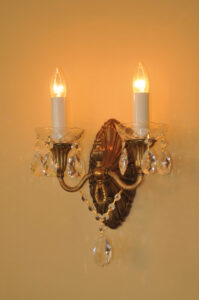 The Perfect Fit
The Perfect Fit
When choosing the right sconce for your home, consider the style of the space in question. Is the furniture traditional with curved lines and turned legs? Are the textiles wrapped in embroidered pattern? Is the room finished with crown molding, honey-colored hardwood floors and an ornate Oriental-style rug? These types of classic spaces may call for wall sconces with an equal amount of elegance. In this case, consider fixtures of brass or black iron. Incorporating lampshades also has the potential to read more classic than modern, and can be customized to any style—from cream and white silk, to geometric patterns and even animal print. If lampshades aren’t your particular taste, another way to achieve a traditional look is to go with sconces meant to look like candles, topped with flame-shaped light bulbs. Or celebrate authentic tradition and hang a real candle sconce. These classic options are lovely and, with glass surrounds, offer a safe way to add a flickering glow.
For more modern spaces scattered with punches of bold colors, geometric art and clean-lined mid-century furniture, sconces tend to be simpler and more understated than their traditional counterparts. Choose fixtures made from unfinished metals with elongated bendable arms. Imagine a wall-mounted equivalent of a 1960s desk lamp and you’ll see one possible look come together.
If you find yourself drawn to a more eclectic, transitional style, try combining elements of multiple looks. Love cloth lampshades but not a fan of traditional brass finishes? Pair a modern, square-shaped shade with a curved brushed nickel base. Or if you like the classic sheen of brass, but don’t want it to read overly traditional, you can choose a boxy, all-metal brass sconce with geometric detailing.
When taking sconces into a child’s room, you can really play with the details. In a little girl’s room, top sparkling silver bases with lampshades in feminine pinks and purples. Add a whimsical monogrammed detail to really make it hers. For the boys, start with a boxy base and perhaps set a camo-print lampshade on top. The beauty of a funky lampshade is that it can easily be replaced as styles and tastes mature.
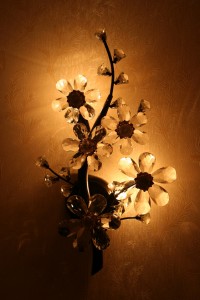 Placement 101
Placement 101
The options in terms of design and style are endless. The art of placement, however, is a bit less open-ended. There’s a reason movie sets have trained, professional lighting experts on hand; proper lighting is truly scientific, taking into account the right height, brightness, spacing, and quantity of fixtures needed.
To calculate the number of sconces for a room, judge by its size. For a large living space or kitchen, sconces can be plentiful but should be used to supplement, not complete, the lighting. Be sure to incorporate other lighting options to achieve balance, such as floor lamps, recessed overhead lighting, or tabletop lamps. On the other hand, two wall sconces may be all you need in a small office or bathroom. Think of them in terms of layering and what each individual room needs to feel complete.
Take your time brainstorming ways to incorporate wall sconces into your home. Stand at the entrance of the room in question and look around you. What spots seem too dim to feel inviting? Where is the lighting a little too overpowering? Sconces should relate to something and feel integrated with aspects of the room—centered between a pair of wingback chairs, flanking either side of a fireplace mantel or piece of statement artwork, or simply situated to accent an interesting architectural feature like an arch or column. These fixtures are meant to highlight their surroundings, so be cognizant of the zones in a room that can benefit from wall-mounted accent lighting.
As another example, consider a bathroom. You may have heard that the right light beside a bathroom mirror can melt years away from your reflection. The eye-level glow from a decorative sconce could easily provide the magic that overhead lighting wants to destroy. Lighting beside the face will give you a true-to-life reflection rather than one distorted by shadows from light cast downward. Install a dimmer switch to fully control the effect.
Adequate lighting in a kitchen is an absolute must, but that doesn’t mean you have to relegate all of it to the ceiling. Hard wire a pair of sconces alongside the cooktop or above a banquette in the eat-in dining area. Eye-level light has the ability to soften overhead fixtures and turn a largely utilitarian room into a relaxing place where people want to congregate.
Need a few other instances where low-hung lighting sets the tone? Install a line of them down the length of a hallway with family photos hung between, or embed them in a large flush-mounted mirror in the dining room or master suite. For a kid’s room, try placing a pair at their eye-level on either side of the bed for well-lit bedtime stories and play. Sure, sconces are a no-brainer on each side of the bed, but don’t forget the sofa for this type of pairing too.
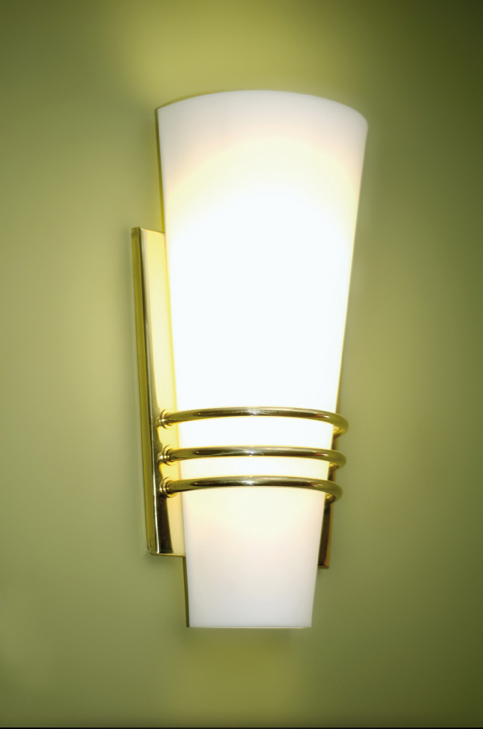 Hard-Wiring Standard
Hard-Wiring Standard
When wiring multiple sconces in a space, the general rule of thumb is to install them between 60 and 72 inches from the floor, depending on the height of the home’s occupants, and with about 8 to 10 feet of separation between each light. These standards are in place so that you can avoid the look of a dim movie theater or the fluorescent feel of a doctor’s office. Remember, you want to find the perfect balance between too dark and too bright. The “rules” also help establish a cohesive and intentional look to your sconce collection. Pairs of lights read as a unit, creating balance, whereas sporadic numbers and spacing will throw off the scale (and mood) of a room.
If new to electrical work, this project may be best left to the experts. A trained electrician can charge anywhere between $40 and $100 an hour, so keep this in mind when deciding on placement. Keep your costs down by placing new light fixtures near existing wiring, so that running electricity to the new light won’t be a major hassle. The installation of the light is the easy part; it’s running new wire to an uncharted location that will run your final invoice up.
Wall sconces offer homeowners the ability to layer on drama and mood in a space, all without taking up valuable surface area. Beauty meets function in these fixtures, which isn’t an easy combination to find. If wrestling with wires and toppling lamp bases is getting you down, cut through the chaos and wire up some eye-level, in-wall peace of mind.






